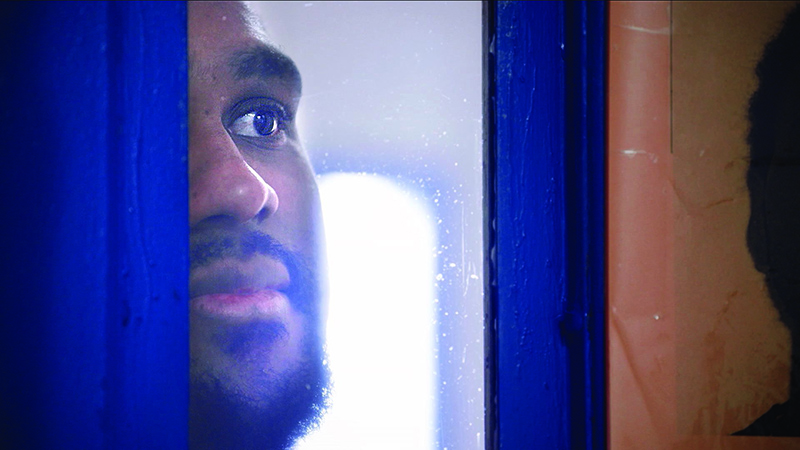
At the 2016 Tribeca Film Festival, enormous creativity was on display, from many angles. Perhaps most interesting was a critical mass of journalistic work on systemic problems, often expressed in ways that vigorously exercised the flexibility of the form.
The fest was of course rich in performance, glamour and celebrity. Contemporary Color captures an extraordinary spectacle of grassroots performance art—David Byrne orchestrating displays by color guards from across the US—in the combination of magical realism and cinéma vérité that the brothers Bill and Turner Ross (45365, Tchoupitoulas, Western) have been working on for almost a decade now. The film earned jury awards for cinematography (Jarred Alterman) and editing (Bill Ross). In Ester Gould and Reijer Zwaan's Strike a Pose, the adorable boy-crew that danced with Madonna in her Blonde Ambition tour (captured in the 1991 doc Truth or Dare) looks back on their lives 25 years later. Those who survived still have charisma, though for all of them the tumble from glamour and fame to ordinary life was a rough transition, and it happened when the AIDS epidemic was raging, with treatment just beginning. Other docs featured Richard Branson, Leonard Nimoy, DJ Steve Aoki, chef Jeremiah Tower and more.
Meanwhile, a clutch of documentaries, shorts, interactive and VR pieces (we are now to call them "experiences") creatively addressed systemic issues core to democracy. Daily journalism coughs up bits and pieces of important, endemic and deepening problems, in the form of scandals, conflicts and incidents; documentaries are capturing patterns.

Tackling the subject of policing, first-time filmmaker Craig Atkinson's Do Not Resist, which won the jury award for Best Documentary Feature, creates a Cubist portrait of a militarized police force, trained to regard the civilian population as "monsters" and enemies and armed to fight them with leftover (and even brand-new) equipment from our wars. Civilian footage from protests, scenes of an MRAP barreling down a small-town street, Congressional hearings, police trainings, a SWAT team raid that nets a smidge of personal marijuana while wrecking a house and a man's living: This is all shown from the implicit view of citizens who are increasingly at risk from their own "peace officers." (The term evokes last year's hit documentary, Scott Christopherson's Peace Officer, about the alarming growth in inappropriate use of SWAT teams and techniques.) Concentrating on the same theme was The Argus Project, an installation in the interactive exhibition Storyscapes, featuring three video panels of testimony by activists and family members of victims, fronted by a statue of an officer in total body armor studded with cameras and sensors. Gan Golan's project was designed, he said, to encourage civilians to become a many-headed surveillance body against police violence. Golan himself was a victim of police violence; the project team hopes to tour the installation and use the videos with activists. In the Virtual Arcade, Janicza Bravo's five-minute VR experience, Hard World for Small Things (familiar to fest-goers from Sundance), took viewers on a ride with a young man who ends up shot by police. Also in the Virtual Arcade, the narrative short Perspective 2: The Misdemeanor, by Rose Troche and Morris May, tells an incident of police violence from four perspectives.
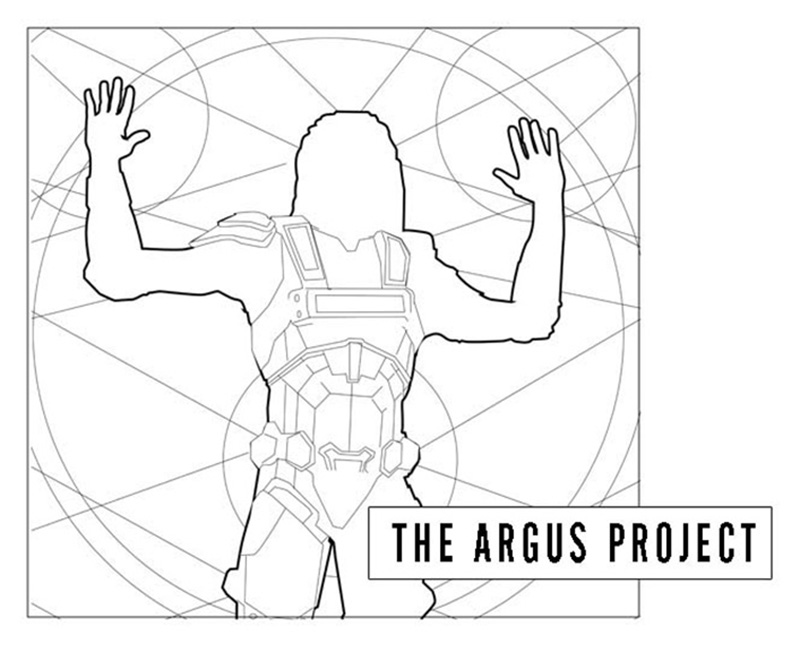
Exploring judicial practices, veteran radio journalist Deborah S. Esquenazi's Southwest of Salem is a true crime story that helped get four Texas women out of prison. The women, all lesbians, had been there for two decades, having been falsely convicted of performing Satanic rituals on children. Rather than a did-they-or-didn't-they thriller, it's a will-these-innocent-people-get-out drama. Key to the story is an astounding sequence in which one of the supposed victims recants her testimony, which her stepfather had forced her to give. Esquenazi, who worked with the Innocence Project, released this interview before the film was finished, and the material precipitated the women's release. The film points to "junk science," bias against lesbians, and unmerited confidence in the judicial system as reasons why these women lost the prime of their lives.
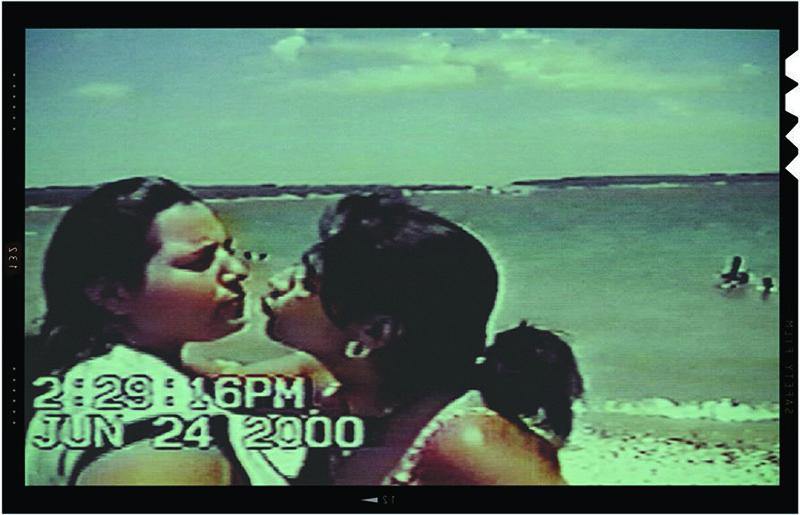
Untouchable, a first film by lawyer David Feige, who earned the Albert Maysles New Documentary Director Award (fellow filmmaker/lawyer Rebecca Richman Cohen produced), finds some of the same problems with current approaches nationwide to sexual offenders. State laws are increasingly punitive, denying sex offenders access to many public places, limiting job opportunities, and often encouraging re-imprisonment on flimsy grounds, while also making therapy hard to find or offering bogus therapies. Worst of all, laws put a wide range of seemingly expectable sexual acts, such as consensual underage sex, in the same category, with the same punishment, as heinous and violent deviance. The film profiles two opposed types. There are sex offenders, including one Oklahoma woman who at age 18 had sex with a 14-year-old at a party and is on a registry for life, and an elderly pedophile who gets regular and successful therapy to manage his condition (he is also under perpetual surveillance). And there are activists who work to make laws even more stringent, including the macho Florida lobbyist Ron Book, whose daughter had been abused by her nanny. Seeing these issues through the lives of the people who live with the consequences makes today's approach look devastatingly counter-productive. At the same time, meeting the activists makes clear why and how the policy has taken root and is spreading.

Prison conditions are the subject of Kristi Jacobson's deeply disturbing and moving Solitary, which will air on HBO. Jacobson takes us inside a well-run supermax prison where solitary confinement is the norm. Profiling several prisoners and staff, as well as the warden, she shows us how isolation from human contact is torture; prisoners and staff alike bear witness to the terrible dehumanizing cost. You don't have to be a liberal to abhor solitary confinement at the end of this movie, and you don't have to believe that the prisoners were unjustly imprisoned. (You might grieve that people lead lives of such neglect and abuse before imprisonment that they end up there, though.) Jacobson brings us intimately close to the people we have chosen not to look at—both the men inside the boxes and the men who keep them in chains and shove their food through slots. If you wanted to briefly experience solitary confinement, you could visit the VR installation 6X9, by Francesca Panetta and Lindsay Poulton, at Storyscapes. You could sit on a cot in a cell and, with the help of a VR headset, contemplate ways to spend 23 hours a day, day after month after year after decade. Many left shaken and upset—and that was after only nine minutes.
And what happens to prisoners who return to society? In the Audience Award winner, The Return, by Katie Galloway and Kelly Duane de la Vega (Better This World), we meet two men who are released when California drops its three-strikes law in 2012. Public defenders are working overtime to help prisoners long incarcerated on draconian law to get free; huge numbers are theoretically eligible. For both of the men profiled here, re-entry is shocking, challenging and unsupported. Families do what they can, and children especially are eager to build relationships wrecked by jail times that spanned their entire lives. But prison has taught the men skills that are not helpful in the civilian world, and the world they enter is rigged against ex-offenders. Meanwhile, the embattled public defenders work on behalf of a man who was imprisoned despite manifest evidence of mental illness, and who has never received treatment. The film, with understated, uncommented cinéma vérité, follows the defenders and the released men through their daily lives, and the result is a devastating indictment of a penal system that continues to punish after release. The Return opens POV's 2016 season on May 23.
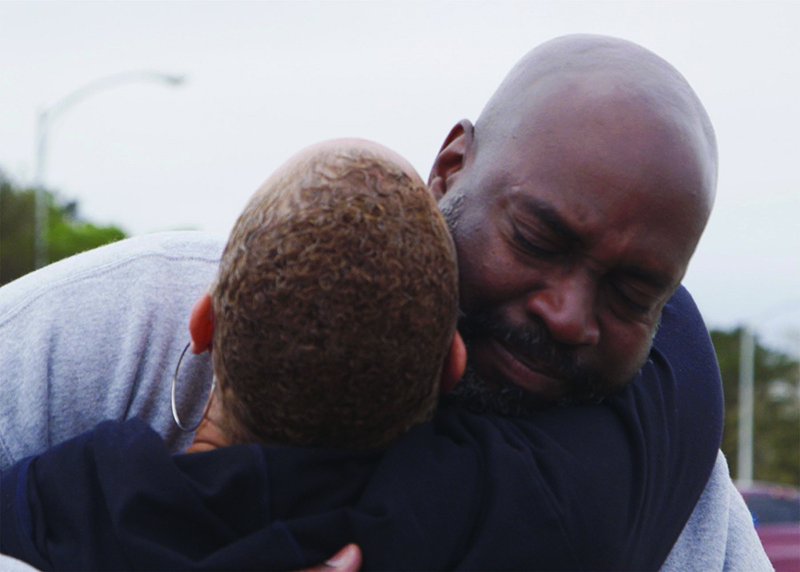
Several Tribeca docs take up systemic issues in the realm of geopolitics, extending far beyond our borders. Command and Control, by Robert Kenner (Food, Inc.), brings us back, with re-enactments that convincingly—heart-stoppingly—simulate poorly preserved video, to a real-life nuclear missile accident that could have taken out St. Louis. The incident is only one of many, and emblematic of the problems of maintaining nuclear capacity worldwide. PBS' American Experience will eventually air the film. At the Games 4 Change Summit, Smriti Keshari also previewed her installation, the bomb—an hour-long, 360-degree immersive film projected on all surfaces, with live music in the center. Like Yvette Chin, who had designed a game that allows you to go on a scavenger hunt for hidden nuclear weapons around the world, and Eric Schlosser, who wrote the book on which Command and Control is based, Keshari believes that art could create urgently important awareness of the grave dangers. "I've been writing about nuclear dangers now for nine years," said Schlosser on a related panel, "and I'm not discouraged." He pointed to the power of citizen protests of nuclear power and of films to influence public policy. "Either you're doing what you can, no matter how small," he said, "or you're part of the problem."
Johan Grimonprez's Shadow World, grounded in Andrew Feinstein's book The Shadow World: Inside the Global Arms Trade, is a suitable documentary companion piece to the fictional Lord of War; it argues, with alarming plausibility, that we have privatized the function of war, with the war-serving corporations (Halliburton et al.) in the position to dictate state policy. The interviews are frank and brutally clear. A military analyst explains how taxpayer dollars fund outrageous projects: "It's a self-licking ice cream cone. Over-promise the technology; undersell the cost; get contracts out to firms in every state so everyone has an interest." And so, in the words of investigative journalist Chris Hedges, "If we lose the war in Afghanistan, it's good for Halliburton. It's a corporate coup d'etat in slow motion." Former Rep. Cynthia McKinney says she got death threats for simply raising the issue.
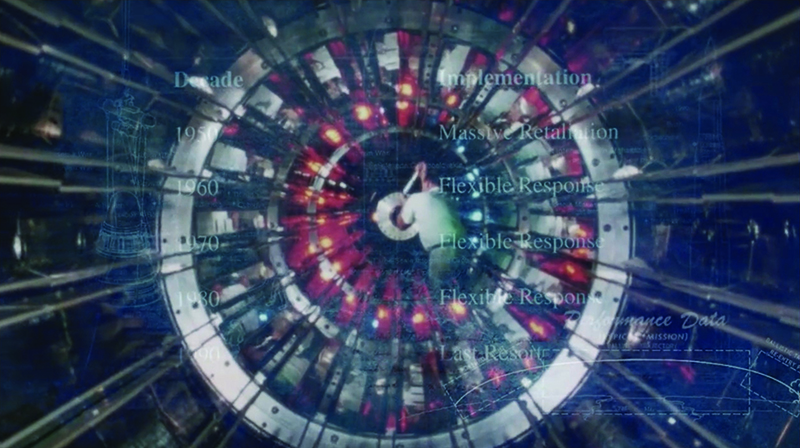
Shadow World targets drones as the next phase of the military adventure, with a $1 billion contract issued for them by the Obama Administration. The implications of the fast-moving program drove investigative journalist Sonia Kennebeck to put her ideas for a film on the military and veterans on a fast track. The result is the urgently topical National Bird, which was executive-produced by Wim Wenders and Errol Morris, and will be in theaters before airing on Independent Lens. The film sees the US drone program from the inside—the people who have to identify the targets and track the destruction rained down on the ground. "I was interested both in weaponry and in veteran suicide," Kennebeck said in an interview with Documentary following the screening, "and these topics came together in the drone program." With an intimacy that bespeaks both good journalism and great mutual trust, the filmmaker profiles two sets of victims: those on the ground, too often mis-identified by trigger-happy local commanders, and those at desks and consoles far away, watching body parts scatter on a monitor.
Heather, one of the subjects in the film, used to remote-pilot the drones; although she showed profound psychological damage and suicidal thoughts, the military never gave her treatment. She has been fighting to get it from the VA ever since. Lisa, another subject, did logistics for drones, and has lost her ability to believe that the program is helping fight against terrorism. She returns to Afghanistan to beg forgiveness from people whose families were destroyed by drone bombing. "They apologize, and then they bomb a wedding. Please stop doing this!" one Afghan says. Daniel, who also was in the drone program, has been speaking out—carefully, so as not to trip over classified information—about the dangers of the program. "The drone strikes don't save lives," he says. They create havoc, because "anyone over the age of 16 is a legitimate military target." The FBI has brought an investigation for espionage as a result, after warnings to keep quiet did not work.

Kennebeck said that the hardest part of the film was doing the original research. Indeed, the journalistic docs at Tribeca generally were well-grounded in deep research, sometimes through collaboration with journalists and lawyers. Like their subjects, and as described in the study Dangerous Documentaries, these makers take the risk to speak out on topics that deserve sustained attention from policymakers and the citizens who push them to pay attention. They move beyond the poignant and individual, to ask questions about how we got here now, and how we get out. They consciously treat the viewers as citizens who need not only to know but to bring these issues into conversations with each other and with their policymakers. They're asserting, in the process, a distinctive and critically important function in the media ecology for journalistic documentaries.
Patricia Aufderheide is a professor in the School of Communication at American University and author of, among other books, Documentary Film: A Very Short Introduction and, with Peter Jaszi, Reclaiming Fair Use: How to Put Balance Back in Copyright.
